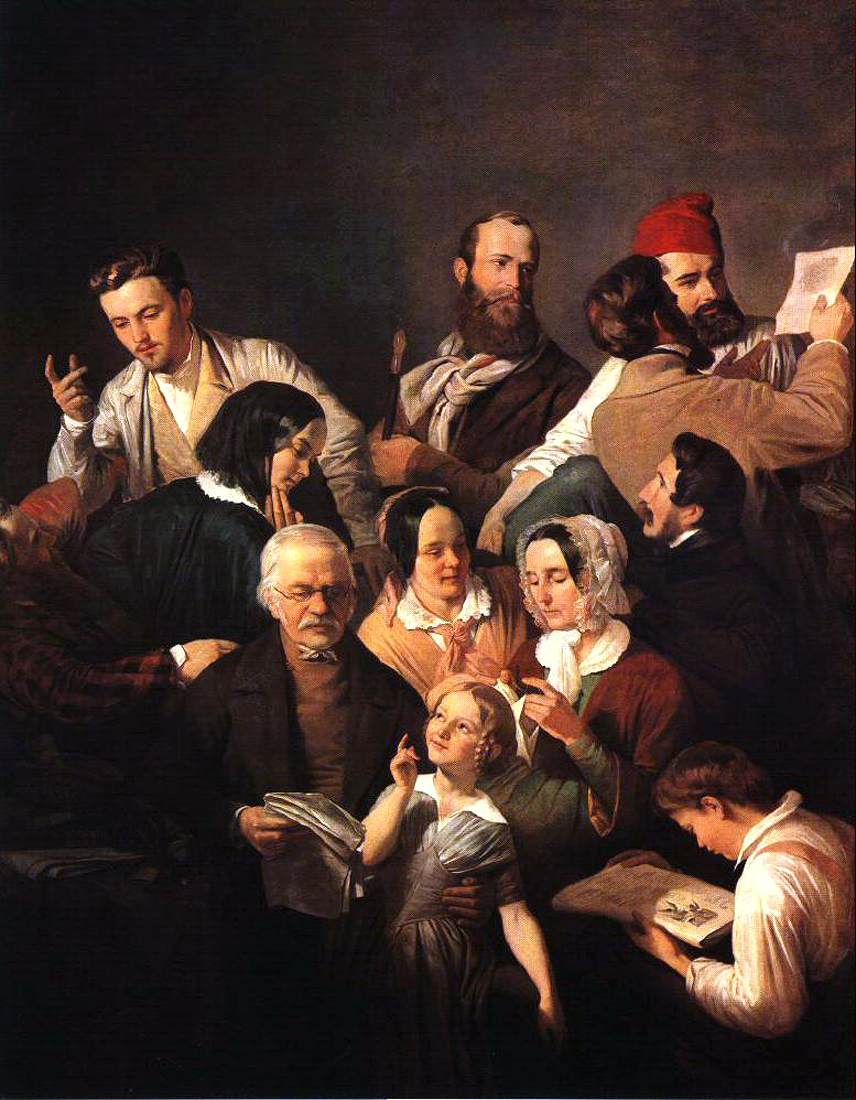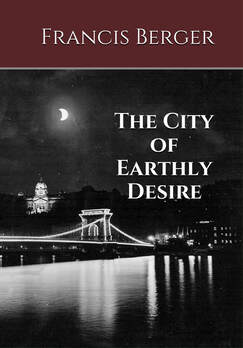Henrik Weber (1818 - 1866), a Hungarian portrait and history painter who worked exclusively in the Realist style, offers an imaginative take on the portrait through the depiction of his own family. I am not very familiar with Weber's artwork, but I recently stumbled across this charming portrait of his own family - a portrait that flies in the face of conventional portrait composition. Not only does Weber succeed in bringing the personality of each of his family members to life, he also endearingly captures the essence of the subtle, loving relationships dynamically weaving through the family itself. Notice that none of the subjects are looking directly at the viewer, but rather at each other or at objects typifying their personalities. This choice on Weber's part, coupled with the clustered arrangement of the figures themselves, is both an engaging take on family portraiture and, in my humble opinion, a masterstroke of composition. Interestingly enough, the artist chose to depict himself with his face obscured and his back turned to the viewer - once again, a masterstroke.
|
Before the advent of photography, portrait painting was one of the the only means through which individuals could preserve a likeness of themselves for posterity. Unsurprisingly, having one's portrait painted in the eighteenth and nineteenth centuries was almost exclusively a privilege of the aristocracy and upper classes. Of these portraits, the vast majority appear rather stiff and lifeless. The subjects are usually rigid, and they almost always, without fail, stare out fixedly at the viewer in a manner that at once is both unnatural and, oftentimes, unnerving.
Henrik Weber (1818 - 1866), a Hungarian portrait and history painter who worked exclusively in the Realist style, offers an imaginative take on the portrait through the depiction of his own family. I am not very familiar with Weber's artwork, but I recently stumbled across this charming portrait of his own family - a portrait that flies in the face of conventional portrait composition. Not only does Weber succeed in bringing the personality of each of his family members to life, he also endearingly captures the essence of the subtle, loving relationships dynamically weaving through the family itself. Notice that none of the subjects are looking directly at the viewer, but rather at each other or at objects typifying their personalities. This choice on Weber's part, coupled with the clustered arrangement of the figures themselves, is both an engaging take on family portraiture and, in my humble opinion, a masterstroke of composition. Interestingly enough, the artist chose to depict himself with his face obscured and his back turned to the viewer - once again, a masterstroke.
0 Comments
Your comment will be posted after it is approved.
Leave a Reply. |
Blog and Comments
Blog posts tend to be spontaneous, unpolished, first draft entries ranging from the insightful and periodically profound to the poorly-argued and occasionally disparaging. Comments are welcome but moderated. Please use your name or a pseudonym in comments. Emails welcome: f er en c ber g er (at) h otm ail (dot) co m Blogs/Sites I Read
Bruce Charlton's Notions Meeting the Masters From The Narrow Desert Synlogos ✞ Aggregator New World Island New World Island YouTube Steeple Tea Adam Piggott Fourth Gospel Blog The Orthosphere Junior Ganymede Trees and Triads nicholasberdyaev Archives
July 2024
|


 RSS Feed
RSS Feed

